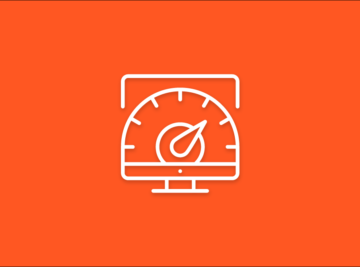Google Analytics is one of the most powerful conversion-rate optimization tools available to marketers. Knowing more information about who your visitors are, where they came from, and what they came for will help you to optimize your website for conversion. In Phase 1 of your CRO strategy you will:
-
Set up goals
-
Add a conversion value
-
Create Funnels
Google Analytics is among the most powerful tools a digital marketer can utilize for success. Set it up correctly, and it enables you to see insights about your website audience, where your visitors come from, and which pages on your site they frequent.
But what many marketers may not know is that it’s not just for reporting. With the right set-up and the knowledge to look in the right places, it can also be your most powerful conversion-rate optimization (CRO) tool. In this post we’ll guide you through the steps required to set up goals in Google Analytics. Goals, or conversions, are at the foundation of CRO after all. If you don’t know your conversion rates, how can you optimize them?
Consider the steps below Phase 1 of your CRO efforts. In the posts that follow, we’ll dive much deeper into the topic, and show you mid-level to advanced techniques for using Google Analytics for conversion-rate optimization in your inbound marketing strategy.
1) Set Up Goals
The first, important step is to set up conversion goals within your property and view. These goals are trackable actions your visitors take while on your site. For example, if your site’s primary objective is to capture leads, submissions on your request a quote or contact us form should be captured as goals. If there are lower-importance actions that might influence the likelihood of someone submitting your form, such as watching a video or downloading a PDF file, you may want to capture those actions as well.
Setting up these conversion goals helps you better understand the success of your efforts. Their reporting is directly connected to the rest of your metrics, which means that you can see exactly which of your marketing campaigns lead to which (and how many) conversions. As a result, conversion goals enable you to better track the conversion success of your individual efforts.
Configuring these goals can get a little complicated, depending on the complexity and diversity of the goals you’re trying to set up. But the basic concept is simple: you define the event that triggers a conversion, configure the goal in your admin panel, and watch the results come in.
2) Add A Conversion Value
 With each goal you’ll have the option of defining a conversion value to the event, which means you can specify exactly how much a conversion is worth to you. This is particularly helpful to help you estimate and track the return on investment of your campaigns as it relates to conversions.
With each goal you’ll have the option of defining a conversion value to the event, which means you can specify exactly how much a conversion is worth to you. This is particularly helpful to help you estimate and track the return on investment of your campaigns as it relates to conversions.
Depending on the type of goals you set up in step one, defining your conversion value can be easy or difficult. In cases where your conversion value is not clearly defined, simply use your averages to arrive at the solution. For example, you may want to track the conversion of your lead generation form. If you know how many of your leads on average turn into customers, and what your average customer generates in revenue, the solution is surprisingly simple: average conversion rate x average customer value = worth of a single conversion.
If, for example, your average customer is worth $400 and 20% of your leads, on average, turn into customers, a conversion on your lead generation form is approximately worth 20% x 400 = $80.
Another approach is to weight goals on a scale from 1-100. A lower-value action like viewing a key page might only be worth $1, while submitting a lead generation form might be worth $100.
In addition to helping you calculate ROI, assigning Goal Values also allows you to take advantage of the Page Value metric. This helps you gauge the value of each page on your website by factoring in their contribution towards a goal. It is calculated as ((Transaction Revenue + Total Goal Value) divided by Unique Pageviews for the page or set of pages)).
3) Create Funnels
 The most powerful part of Goals in Google Analytics is the ability to map out each step of a funnel. When creating your goal, toggle the optional funnel button, and list each step in the conversion process.
The most powerful part of Goals in Google Analytics is the ability to map out each step of a funnel. When creating your goal, toggle the optional funnel button, and list each step in the conversion process.
Once your goals are enabled and captured data, you’ll be able to identify where visitors are dropping off in the process. Consider these drop-off points the leaky holes in your funnel. If you see a sharp drop-off in the second to last step, review the page and brainstorm ideas that might improve it. Are there too many form fields? Is there something that might be hard to read, or possibly freezing people’s browsers? Does the page load slowly? Is it mobile friendly? The possibilities are endless, but at least you now know this is the step in your funnel you need to zoom in on.
4) Monitor Performance Regularly
 Of course, setting up your goals, conversion funnels, and goal values matters little if you never review the data. A quick view of your Acquisition Reports can tell you quickly what’s working well and what isn’t. Let’s say you recently ran a Facebook ads campaign. Now you can see how many leads your last Facebook campaign generated, as well as the total value of these leads, you can easily determine whether the investment in your Facebook campaign brought in a positive return. If the campaign is under-performing, you now know this should be the focus of your CRO efforts. Producing just a 1% lift in conversion rate can have a massive impact on your results.
Of course, setting up your goals, conversion funnels, and goal values matters little if you never review the data. A quick view of your Acquisition Reports can tell you quickly what’s working well and what isn’t. Let’s say you recently ran a Facebook ads campaign. Now you can see how many leads your last Facebook campaign generated, as well as the total value of these leads, you can easily determine whether the investment in your Facebook campaign brought in a positive return. If the campaign is under-performing, you now know this should be the focus of your CRO efforts. Producing just a 1% lift in conversion rate can have a massive impact on your results.
Once you’ve completed the steps above, your goal conversions and value will automatically be reported in the right-hand columns of your Acquisition screens, correctly attributed to the individual campaigns, channels, and mediums from which your traffic originates. If you have set up multiple goals, you can also choose the individual goals to report on here.
Look for channels that have low conversion rates. What is the bounce rate? Click on a channel to drill down deeper and start adding secondary dimensions. Is there a single landing page that’s causing the problem? Are there regional differences? How about desktop vs. mobile?
Setting up conversion goals, values and funnels are just the first steps in turning Google Analytics into a powerful tool for your conversion-rate optimization efforts. Stay tuned for the next post in this series, in which we’ll dive deeper into the reports that can help you uncover your best opportunities.










